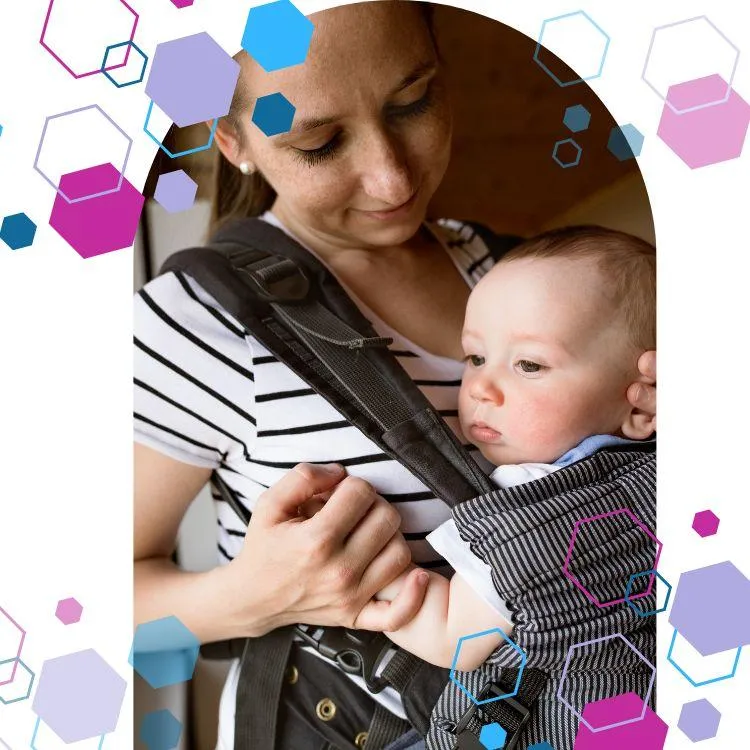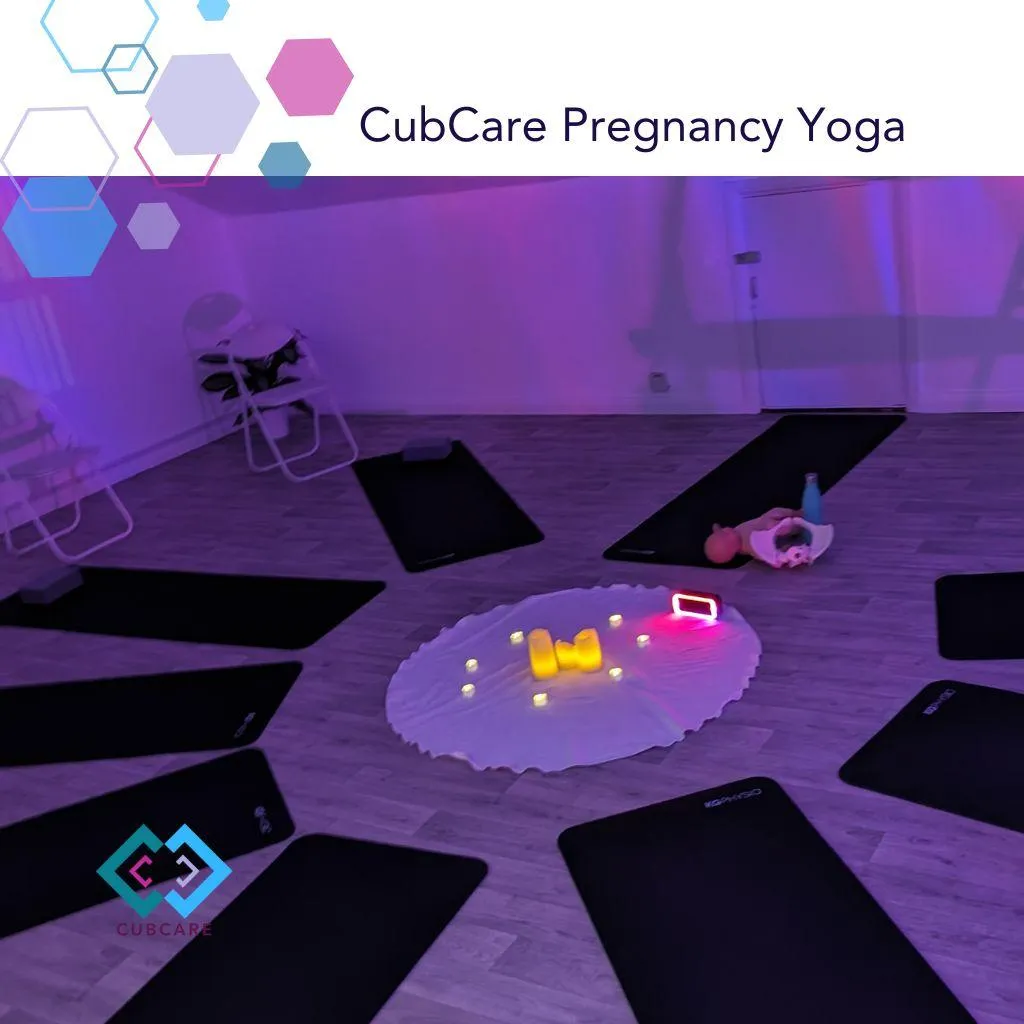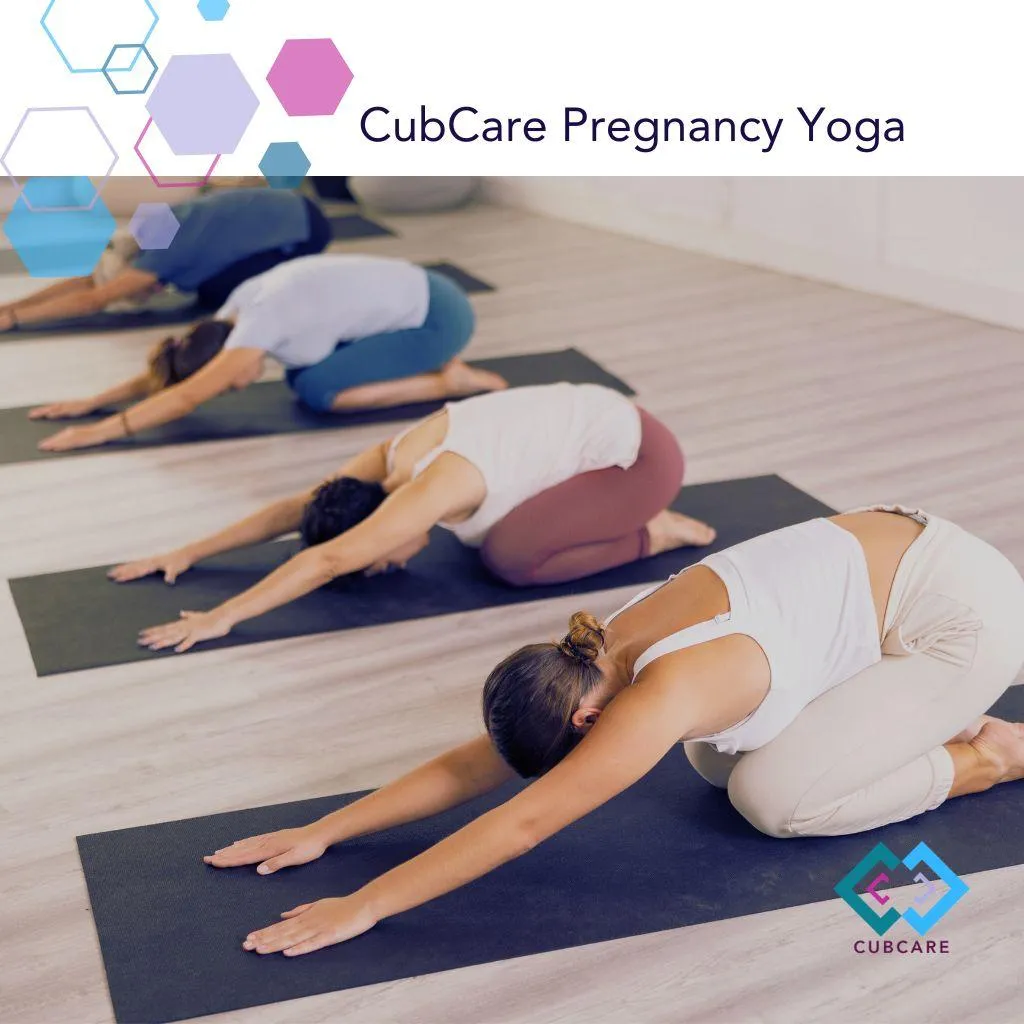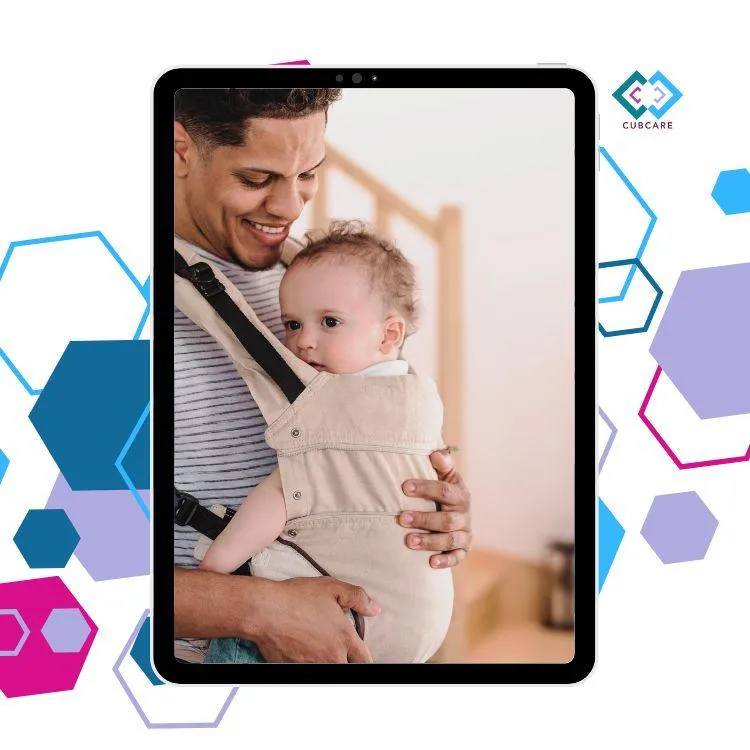We're an award winning Antenatal and Postnatal Education Platform 2025!
(read more here)
Babywearing for beginners
Babywearing 101 - a must read guide for beginners

CubCare Babywearing consultant Welwyn Hatfield

Advanced babywearing
If you are pregnant or have a new baby and are looking into what products you will need then you might have come across babywearing. This blog is a babywearing for beginners guide.
You might have ventured into a local department, or baby store and been overwhelmed with the different carriers with buckles or long expanses of material? There is a lot of choice out there, and carriers/wraps are like shoes – you might need to try some before you find your perfect fit.
If you don’t know where to start with babywearing then this babywearing for beginners guide will help you to make sense of an amazing parenting tool.
What is babywearing?
Firstly, babywearing is the process of carrying your baby in a carrier or wrap. A carrier or wrap is designed to allow the wearer hands-free time whilst their baby is cuddled close to them.
Babies have an in-built need to be close to a caregiver, and the caregiver has a need to get on with their day-to-day jobs sometimes.
Using a piece of material to help support baby being carried on the body has been used for centuries across the world. It is certainly not a new concept. But it is something that can make our lives a bit easier as new parents so it should be a parenting technique in everyone’s toolbox.
A baby will need to be carried everywhere, to enable their needs to be met. As they develop their own ability to move around it does not mean that babywearing will stop.
There will always be times when a toddler or pre-schooler needs to have a moment of connection. Or their legs will just be so tired that they need to be carried.
You will be carrying your child for longer than you might expect, so it is worth learning about babywearing and the different options available.
Is babywearing good for babies?
Yes! Babies NEED to be held and carried - it is their only way to get around, to feed, to have their needs met. It is hardwired in them to need to be carried and soothed continuously.
There are so many benefits to babywearing to consider. Ranging from practical to emotional benefits. There are benefits for adults and benefits to baby too.
Benefits of babywearing for babies
Babywearing benefits for babies: there is limited research on babywearing, although more research on skin-to-skin. It is thought that babywearing should provide many of the same benefits as skin-to-skin. Benefits taken from a 2016 research article.
Babies, particularly for the first 3 months, or the fourth trimester, are going through an adjustment period from life in the womb to life outside. Initially their bodies are used to the constant warmth, movement, sounds and space restrictions of the womb and crave that same environment when adjusting to life in the big, wide world. When worn in a carrier, or being held on your chest, your baby is in close contact with your body, which provides them with a sense of comfort and security. Skin-to-skin and being held release the hormone oxytocin, which can promote a feeling of safety, comfort and love – endorphins are also released, reducing pain and discomfort
The gentle rocking motion of walking or swaying while wearing your baby (from movement or talking) can also help soothe them and reduce their discomfort if there is any wind.
Studies have shown that a baby’s voluntary movement, crying and rapid heart rate (signs of stress) are rapidly reduced when held by a walking mother rather than a sitting mother – they are built to require movement and soothing.
The vibrations from movement or talking, from your digestive system and heartbeat provide that familiarity that babies need when adapting to the world
Close physical contact with their parent’s body can help regulate their breathing, body temperature, and heartbeat, providing them with a feeling of safety and comfort that helps them relax and drift off to sleep.
Feeling safe, secure and responded to will help to aid bonding and attachment – helping lay their foundations for the future and independence.
It can boost intelligence, aid speech development and help baby to start understanding the world – by being close to the action and being part of conversations because they are close to adults this can all help to build their intelligence and understanding of the world.
Being carried can improve their balance and muscle tone – their muscles work to keep them stable against gravity and their vestibular canals in their inner ears have more input from the constant movement, helping with balance.
They have less need to do tummy time on the floor to build the same muscles that are being constantly challenged when in a sling or carrier.
If your baby suffers from reflux, babywearing can also be beneficial. Keeping your baby upright in a carrier after feeding can help prevent stomach contents from regurgitating back up the oesophagus. It’s important to note that not all carriers are suitable for reflux babies, so be sure to consult with a babywearing consultant to determine the best carrier for your baby’s specific needs. With the right carrier and proper positioning, babywearing can be a helpful tool for managing reflux and providing comfort to your baby.
Scientists say the best way to soothe a crying infant is by carrying them on a 5-minute walk”
Benefits of babywearing for the caregiver
Carried babies cry less and therefore require less active calming
Digestive discomfort, overstimulation and dysregulation are common in newborns, and it can result in excessive crying, fussiness, and even sleep disturbances. Babywearing can help reduce these symptoms and calm your baby – improving confidence in parenting Movement can help to bring up trapped air, helping them to feel more comfortable. Movement also helps to move the digestive system, helping milk to be processed more efficiently.
It is a wonderful way to enhance the bond and attachment, you are there to assess their comfort and needs and can respond to any changes quicker than if they were away from you
Oxytocin is released after 20 seconds of close contact with another body – and oxytocin promotes a feeling of love, attachment and contentment. This can help the bond with baby, help to reduce feelings of depression, and importantly, aid with feeding because oxytocin is vital for human feeding.
Movement helps to release endorphins, reducing pain and helping you to feel better and more positive
Feeling able to respond positively, accurately and quickly to baby can help you feel more confident with parenting
The weightbearing aspect of carrying your baby is beneficial for your muscles and bones – using muscles and joints rather than remaining immobile for long periods. They can adapt and grow stronger.
It can help with recovery from pregnancy and birth – oxytocin helps the uterus to contract back down quicker, allowing other organs a chance to move back into place quicker.
Gentle movement and exercise helps to lift mood, and to also get muscles working again
It allows you to feel more able to go places – having a sling or carrier that you can confidently use will allow you to more places than the restrictions of a pram or buggy – stairs aren’t an issue, public transport is easier to navigate, shopping trips are easier without juggling a buggy and a trolley. It is also easier to juggle a baby and a toddler as well, if you have more than one.

CubCare Antenatal Class graduates

CubCare Pregnancy Yoga and Hypnobirthing - to prepare your body and mind
Different types of babywearing - slings and carriers
Just like with prams and buggies, there are several brands of wrap and carrier on the market. And just like prams and buggies, there are different types for different ages and stages of baby-toddler.
Below is a babywearing for beginners guide to the main different types of carriers.
All brands will be slightly different in terms of details and weight limits, but it’ll give you an idea of what type appeals to you.
Stretchy Wrap
This is a long piece of stretchy fabric that is used to tie around you and baby is then placed in and sits facing towards you.
It might look scary at first, but once it is on you can keep it on and place baby in and out throughout the day. A perfect solution for babywearing for beginners.
The stretchy of the fabric gives a lovely cosy feeling, almost mimicking the sensation of being in the womb. Hence why it is so lovely for little ones.
While it is a fairly inexpensive piece of equipment, depending on the brand and the type of stretch it will likely only be comfortable for the first 4-6 months. This depends on baby’s size and the wearer, of course.
Woven Wrap
A woven wrap works in a similar way to a stretchy wrap but because of the make-up of the fabric it offers more support for a longer period of time.
This requires a bit more fabric knowledge, but taking some time to learn can really pay off. Suitable for your entire carrying journey, from birth until 5+ years.
Woven wraps are versatile, offering lots of different carries and finishes. Inwards facing, hip carries and back carries are all possible. They come in different sizes depending on length and do take more learning to get right than a stretchy wrap. But understand the basics and all will be fine!
Ring Sling
A ring sling is usually a woven piece of fabric but can sometimes be more stretchy. There will be metal or plastic rings at one end, and they are used to thread the fabric through to create a pouch that baby is placed inside. Ring slings are used over one shoulder and are suitable from newborn until 5+ years.
These carriers are extremely convenient for quick up/down moments with toddlers and fold down small for ease of transportation. Mainly used on the hip, it is great to provide support for older ones wanting to be on the hip. But they can also be used for central body carries for smaller babies.
Half buckle carrier
These are a good halfway house between wraps and buckle carriers. Usually consisting of a rectangular piece of fabric for the body panel, either a tie up waistband or buckled waist and wrap type straps. Half buckle carriers can sometimes be called meh dais, if they have a wrap waistband.
These carriers offer good versatility across your babywearing days. Often they can take you from newborn until 18 months to two years. And then bigger versions for toddlers and pre-schoolers are available. There is usually an ability to alter the panel size for baby’s size, and the wrap straps offer nice support for the wearer.
Front, hip and back carries are usually possible with a half buckle, depending on brand and model.
Full buckle carrier
Full buckle carriers come in a wide variety of options. Some are simple rectangles of fabric for the body panel and others have sliders, buttons, poppers or buckles to adjust.
Some full buckle carriers are fully adjustable to cover inward facing, forward facing, hip and back carries. While others only support a few, or even one type of carry.
Many carriers will be advertised as lasting from newborn to age 2, but the true longevity is dependent on the child and the wearer. There are also toddler and pre-school carriers on the market.
These are the carriers you are most likely to see in larger baby shops and the brands usually have bigger advertising budgets.
But each brand is made differently so it certainly isn’t a one-size fits all situation. It is worth speaking to a trained babywearing consultant before purchase. Especially if you are a beginner to babywearing.
Backpack carrier
These look like backpacks with a metal frame that baby sits inside and are generally advertised as a hiking solution.
The weight of the frame is often substantial, and the positioning for the child often makes them seem much heavier too.
A buckle or other type of carrier that can be worn on the back, that brings baby closer to you, with an additional backpack on the front is often a more comfortable option depending on your circumstances.



Babywearing for beginners - Safety
With all wraps and carriers, safety is of the utmost importance. If baby is securely attached and safety aspects are followed then there are no time limits that need to be followed. As long as baby is coming out to feed and have nappy changes then you can babywear for as long as is comfortable for everyone.
Depending on the birth, baby can be carried from the start. If there has been a caesarean, then waiting until some healing has started and you are able to move around without painkillers is sensible. And starting slowing with a few minutes at a time is a good idea for everyone and building up the time according to comfort.
Following TICKS (from the UK Sling Consortium) will help you to ensure that baby is safe in a sling or carrier.
T – Tight – an unsafe carry is one that is too loose. An unsupportive and loose fit will allow space for baby to potentially move into a curled-up position and restrict airways.
I – In view at all times – baby positioned high up enough to easily see their nose and mouth. Any fabric should be moved out of the way. Wraps and carriers should go no higher than the nape of baby’s neck.
C – close enough to kiss – ensure that baby is high on your chest (on the hard chest wall) will allow you to see them at all times.
K – keep chin off the chest – to help maintain airways. A supported carrier will allow baby to sit comfortably in an upright position with their pelvis supported knee to knee. This will bring a gentle “C” or “J” shaped curve to their spine and position their head against the chest. A good pelvic tuck and a tight enough carrier will help keep them from slumping down and putting their chin to their chest.
S – supported back – the carrier should go up to the nape of the neck for a baby, and up to the armpits for a baby over 1 year. All carriers or wraps should be secure enough that by gently pushing on their back should not be able to move them any closer to you than they already are. Their body should not move away from yours if you gently lean over (supporting their head).
Babywearing for beginners - Positioning of baby
Ideally baby’s legs will be in a supported “M” shape position, with the carrier supporting them fully from knee to knee. The topmost tips of the M being the knees and the middle bottom being their bottom. This gives the best support to their hips, and to their heads as well.

As you can see in this image, as baby grows their spine straightens out so that C shape turns into a J shape. But the M shape of the hips and knees remains. As baby grows this position will not always be sustainable as they move around and shift position. But that position gives the most support for wearer too so is the ideal.
Babywearing is a learning process, just like with all aspects of parenting. There are some fantastic resources available online but an in person service can be tailored to you and your baby.
A sling library service, like that run by Welwyn Slings, allows you access to a range of carriers to borrow.
A babywearing consultation, like that run by me, Jilly Clarke at CubCare, will allow you 1:1 space to learn, practice and understand the different aspects to carrying and finding the right solution for you.
Some special client words about CubCare Babywearing support
“This labour was SO much better than the first. Your CubCare refresher antenatal course helped so much for the labour, it was much calmer than the first and much more controlled. The breathing techniques were so helpful – I breathed her out!”
“I felt completely in control for the entire 26 hour labour – I just felt so calm, the breaths were incredible and the consultant commented on how she couldn’t believe I’d refused an epidural. I felt confident enough to question and on occasion challenge recommendations of the midwives so that the birth ended up being as natural as possible! A very positive experience to look back on. Thank you!!”
"Jilly has a talent for creating a really welcoming, friendly and safe space which is great for mums and babies alike. The CubCare Antenatal classes are informative and fun, yet relaxed."
See our Babywearing options
Based in Welwyn Hatfield, offering local pregnancy support and doula services across Hertfordshire: St Albans, Hatfield, Welwyn Garden City, Potters Bar, Stevenage, Harpenden, Hitchin, Barnet, Mill Hill and surrounding areas.
Online antenatal and postnatal education available UK-wide.
© Copyright 2025 CubCare The Parenting Hub. CubCare is operated by The Birth and Baby Company Ltd. Company No. 15655287
Privacy Policy | Terms & Conditions | Medical Disclaimer | Inclusivity and Accessibility

